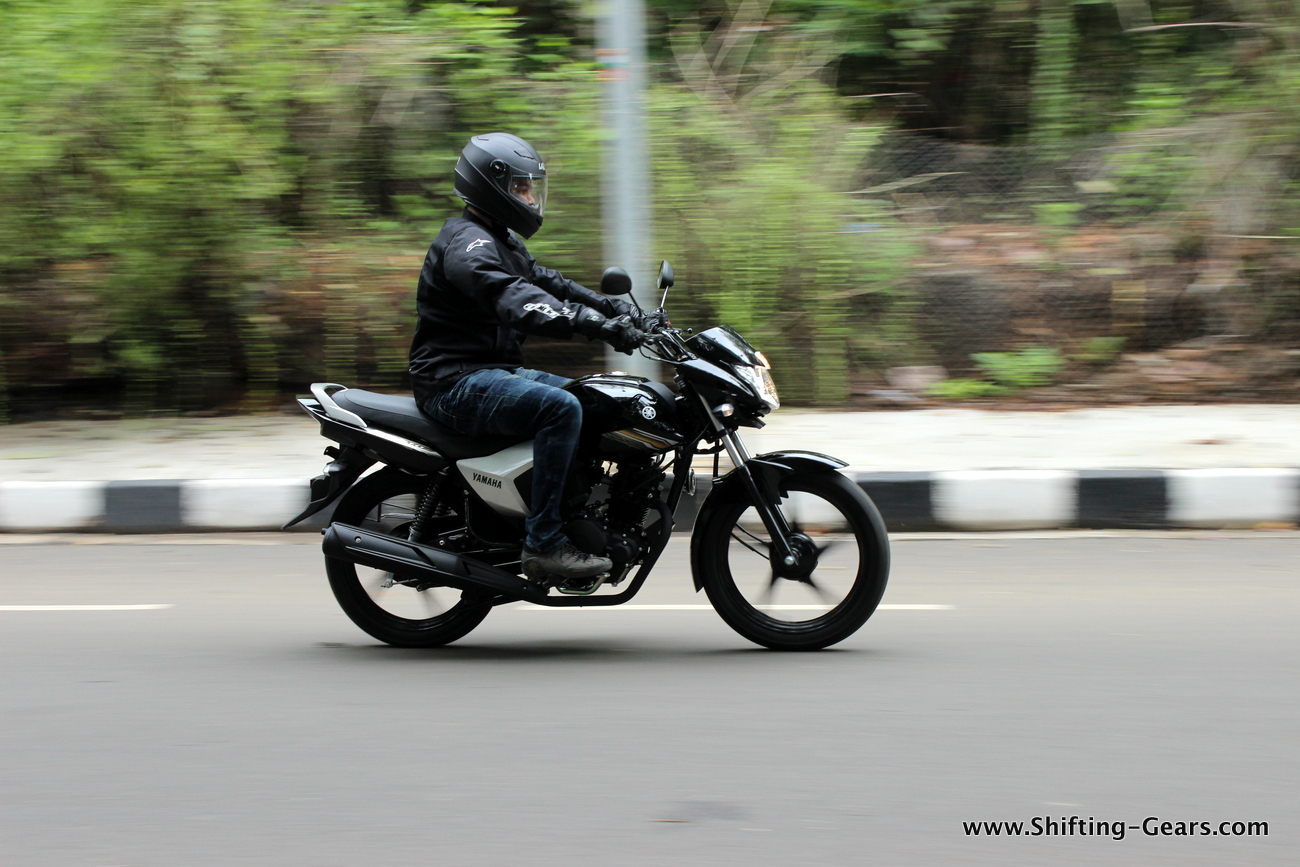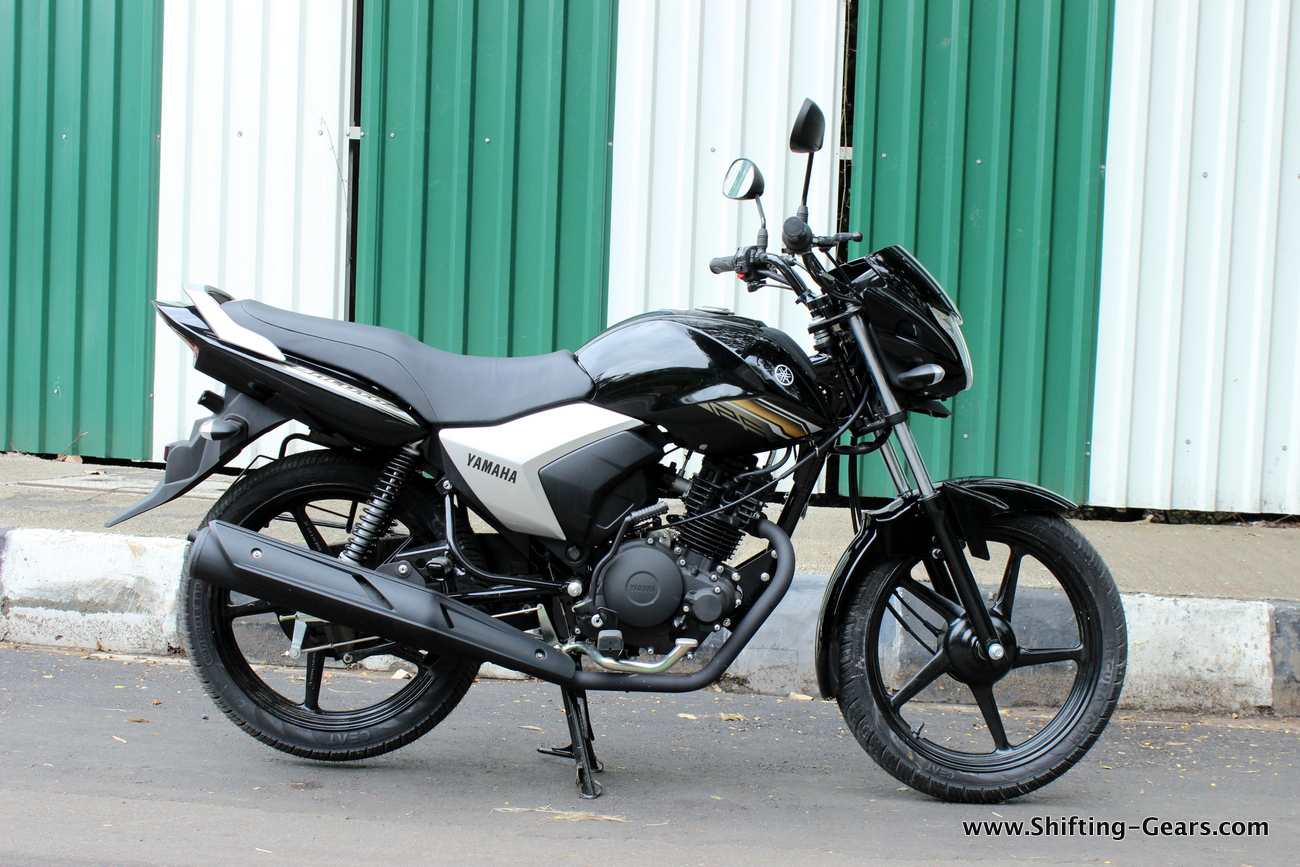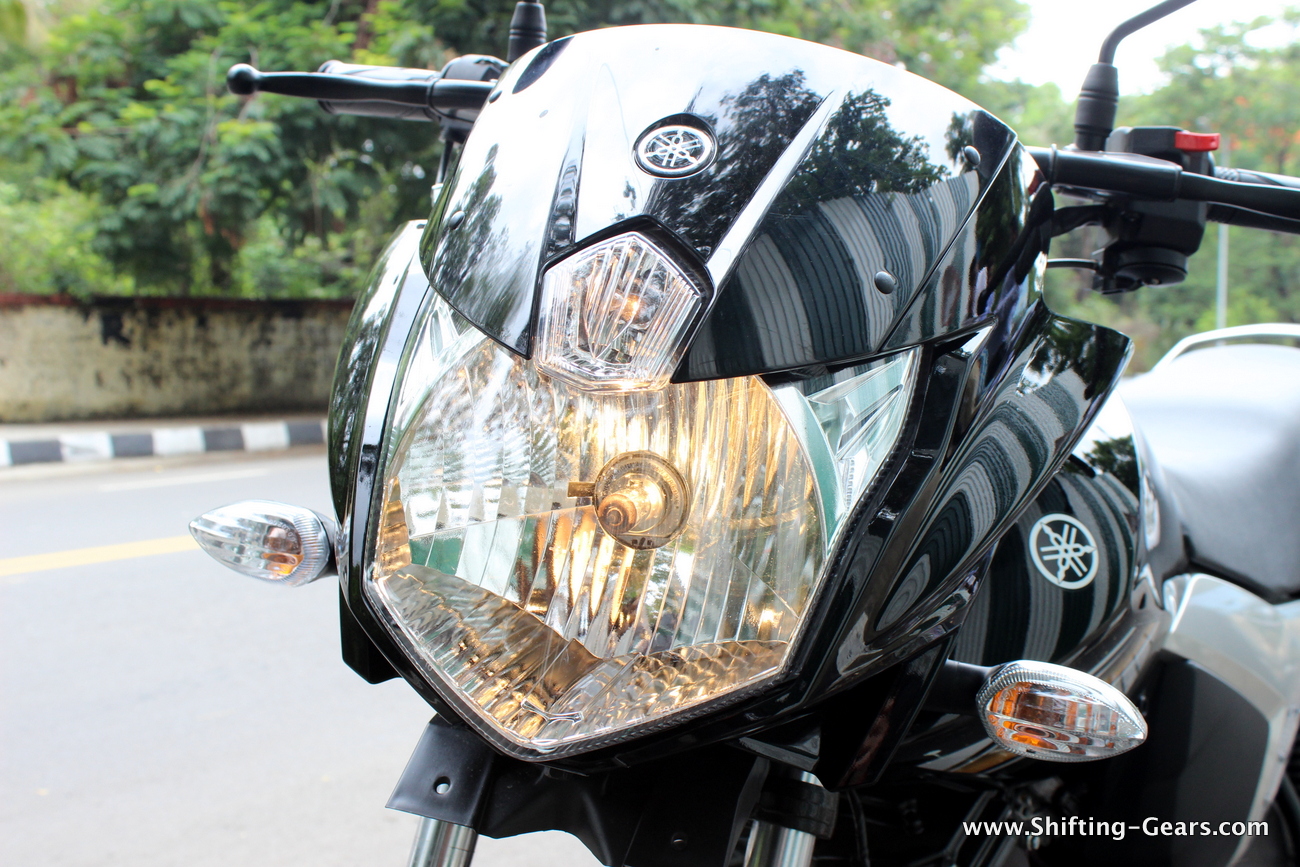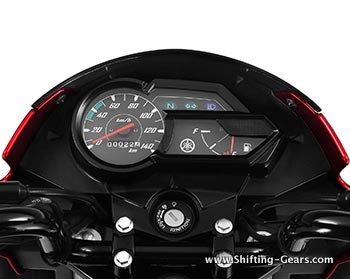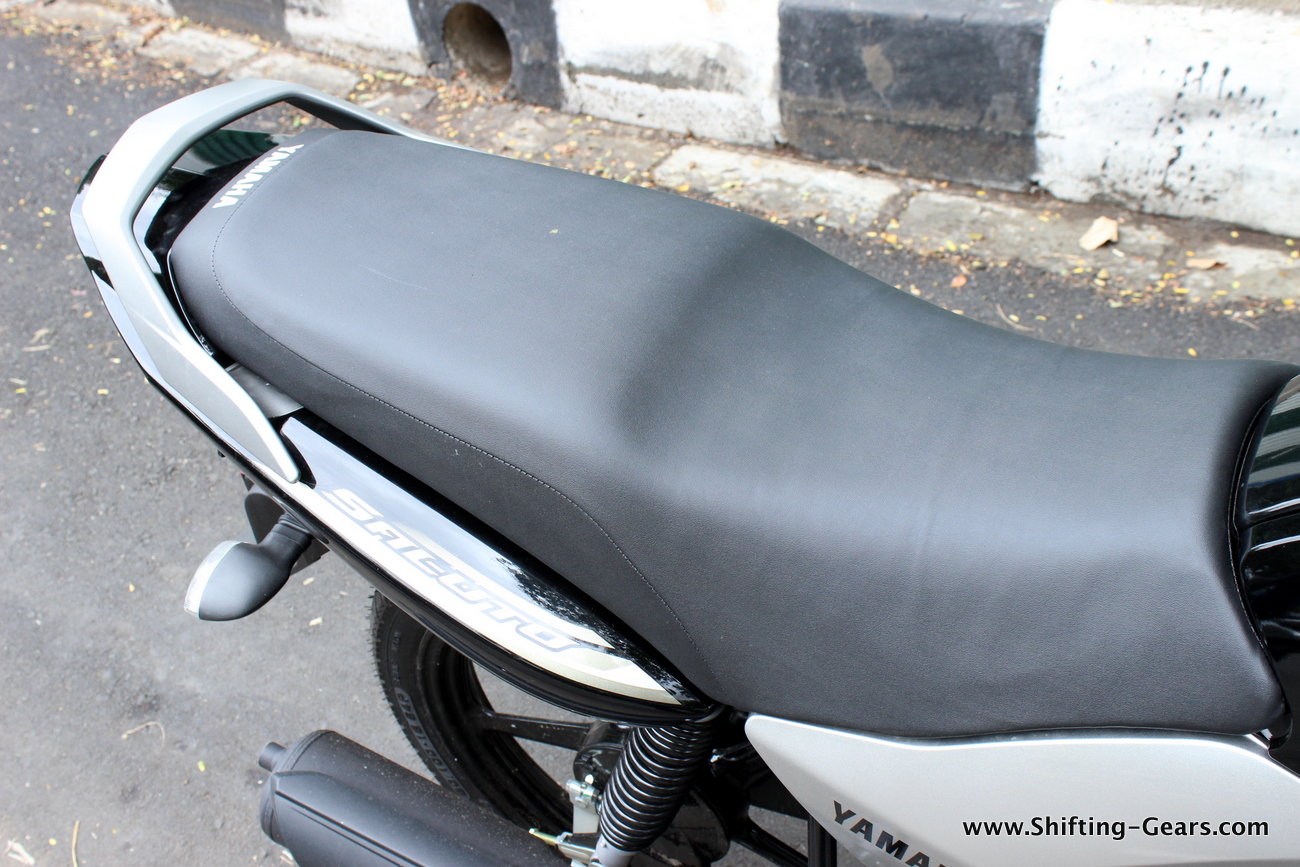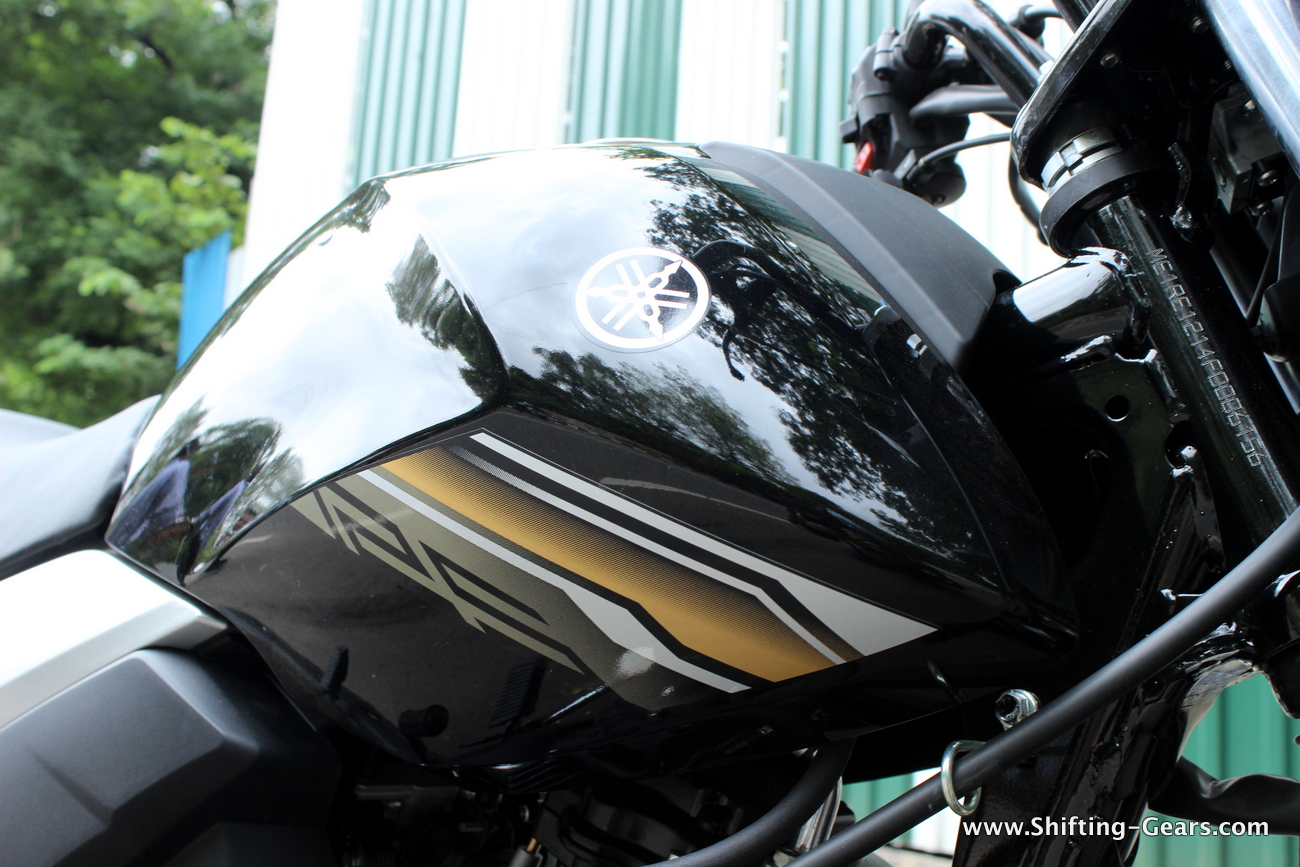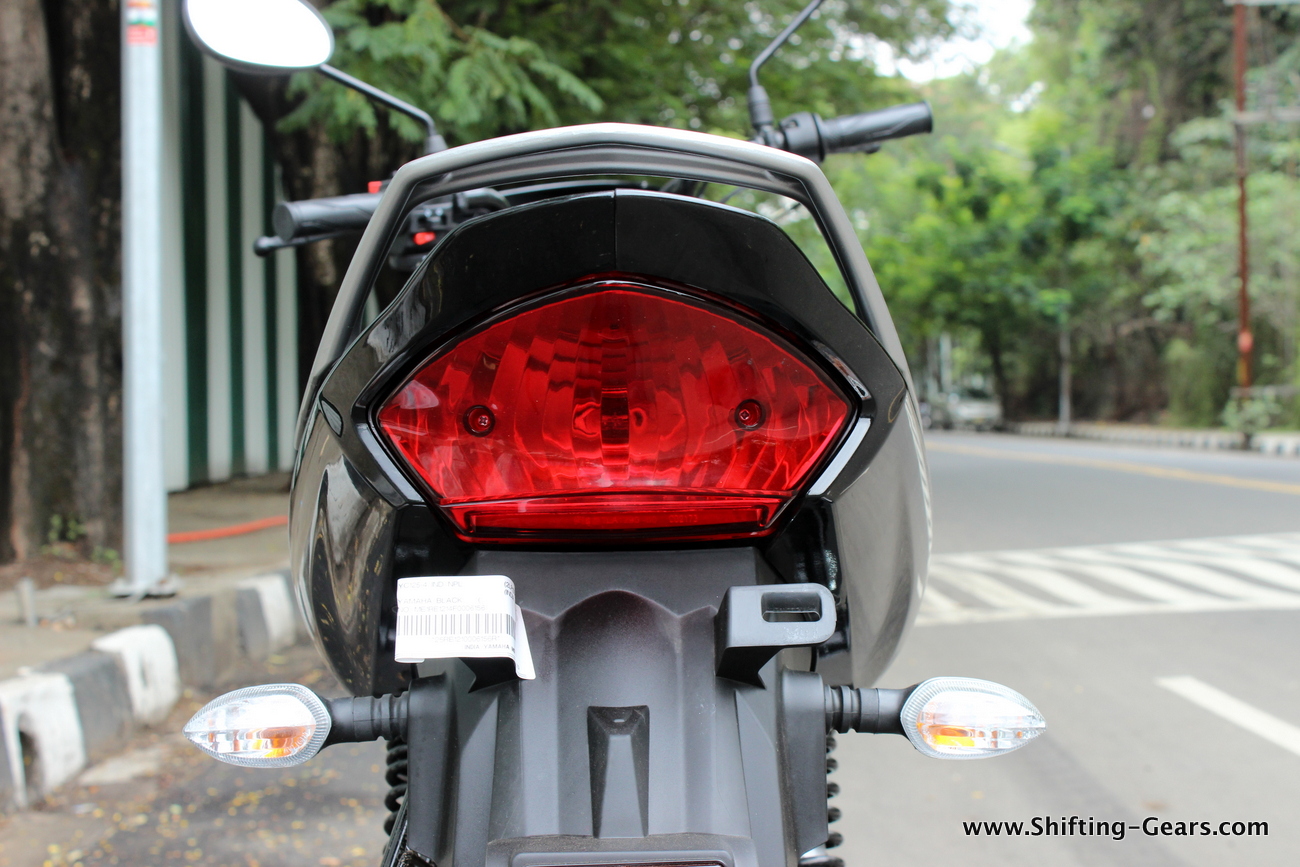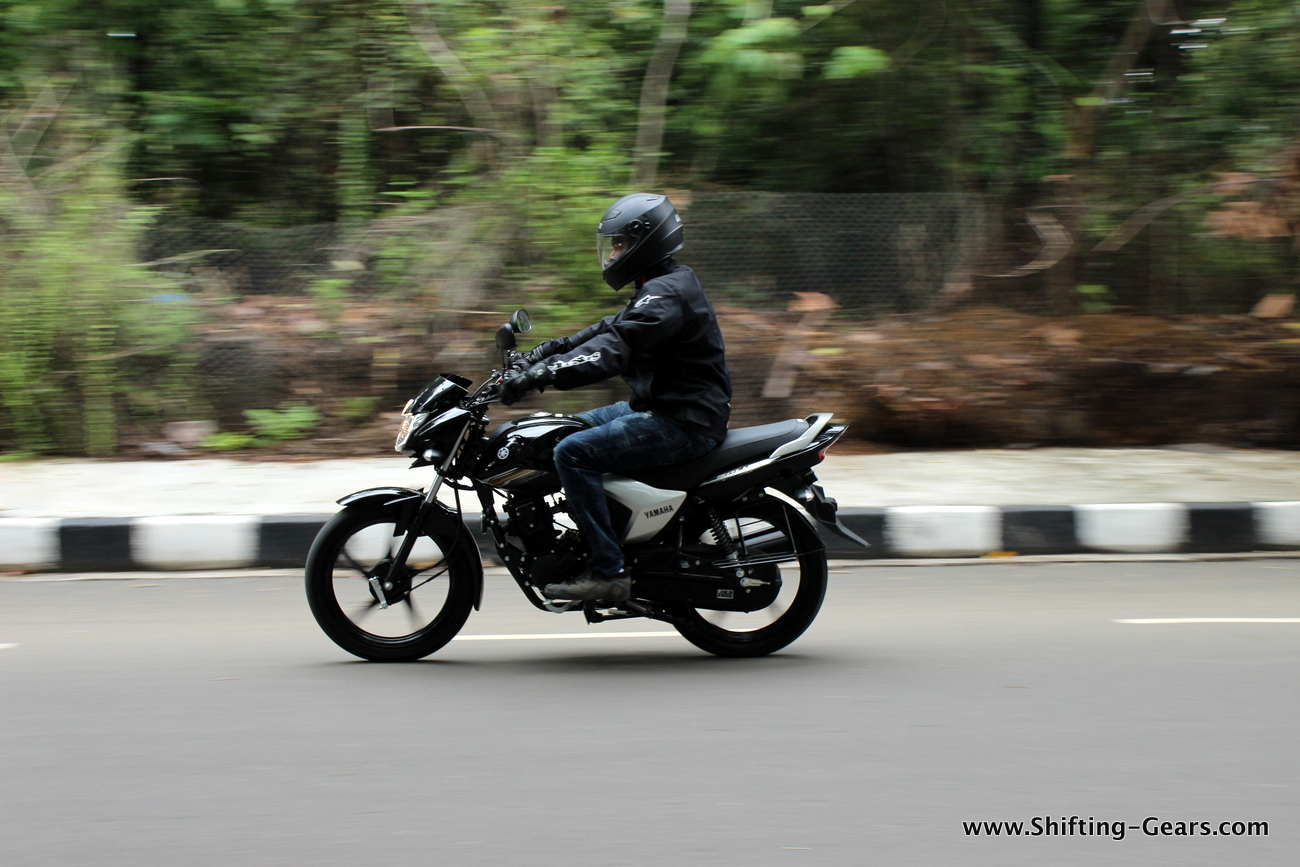For every company out there in the Indian automotive industry, there is only one thing which is of utmost importance – NUMBERS! And if you’re a manufacturer of two-wheelers, you just cannot discount commuter motorcycles if you wish to be amongst the top volumes players in the industry. Yamaha has given the Indian customers quite some taste with affordable performance-spec bikes such as the YZF-R15 & punchy premium 150cc bikes like the FZ. However, in segments below, performance has really been lackluster. Although not in the news or amongst recall worthy advertisements; Yamaha has 7 existing commuter motorcycles in the 100cc – 125cc segment. But these 7 models doing very little in terms of growth in the recent times, Yamaha has now introduced a new 125cc Saluto motorcycle which is the 8th commuter offering by the Japanese manufacturer.
Yamaha claims that the Saluto is built with economy & practicality as prime focus. The market size of overall for commuter motorcycles is well over 50 lakh units annually. Out of this, Yamaha has very little market share. Models such as the SZ, YBR, Crux, etc. have not really clicked well in the Indian segment. Additionally, in this segment, the mass market likes to buy products from segment leaders or based on how visible a model is on the street. Yamaha launched the Saluto as a replacement to the YBR125 but both models continue to be listed on the website. While Hero Honda rules the roost in the 100cc class, the Honda Shine is a very popular motorcycle in the 125cc category. So does the Saluto really come close to grab market share from competitors? Does the Saluto have what it takes to become Yamaha’s volume churning motorcycle? Let’s find out…
Styling:
It’s a Yamaha, yes! But it is a commuter motorcycle, so keep your expectations low. Going by segment standards, the Saluto is just another offering in the 100cc – 125cc clutter. There’s nothing really that stands out and grabs you attention easily. It’s just like any other motorcycle on the street.
At the front, the Saluto get’s a uniquely placed pilot lamp, on top of the main headlamp. Almost like a ‘bindi’ an Indian woman likes to wear. On top of this pilot lamp, you have a small, rubberised Yamaha logo. All this is placed in a gloss black mini windscreen & the headlamp overall also gets a body coloured bikini fairing. Below, the mud guard is XL sized and covers a good area of the tyre to avoid mud spray while riding on wet surfaces. There’s no matte plastic section at the bottom and the entire mud guard is body coloured. Front telescopic fork is painted in black & so are the 5-spoke alloy wheels. The wheels also house drum brakes.
Come to the side and there’s little drama. The Saluto gets a fibre tank body on either side, which is body coloured. The centre portion of the tank is blackened to break the monotony. On either side, you have the rubberised Yamaha logo and a decal which discretely reveals that this is a 125cc motorcycle. Fuel filler cap is the typical of the segment, a steel unit which pops out completely. Just below the handlebar, ahead of the fuel filler cap though you have a fibre black fibre section on the tank. The chassis is neatly covered with a silver y-shaped (placed sideways) body panel. There’s ‘Yamaha’ written over here in black, for those who do not recognise the logo. Engine compartment is also completely blacked out. The Saluto gets nice & long contoured seats which should keep commuters happy. Typical of this segment, the Saluto also gets a toe & heel gear shifter.
Come to the back, and it’s a plain Jane story yet again. We really like how Mahindra added LED tail lamps to the Centuro and showed some effort to stand out. The Saluto gets a regular tail lamp unit with a XL sized mud guard below. Turn indicators get clear lens. On top, the rear side panels sport a ‘Saluto’ decal and the pillion gets a chunky grab rail to hold on to. Exhaust pipe is slightly upswept and is completely blacked out. Rear 5-spoke alloy wheels also house a drum brake and the suspension duty is performed by hydraulic shock absorbers. There’s a saree guard to the left, which really looks unfinished and right out of a weld-shop. Yamaha provides full chain cover for the Saluto.
Overall, the Yamaha Saluto is a decent looking motorcycle, but not really the best. We think that the Honda Shine looks better than this while the TVS Phoenix offers the best VFM package.
Instrumentation & ergonomics:
Instrument cluster of the Saluto looks basic & gets an analogue speedometer, no tachometer. We wish Yamaha had at least offered a digital odometer on the Saluto to suit 2015 standards, but then, nobody in the segment thinks it is important except for a few. Fuel gauge gets a separate section to the RHS of the speedo and a coupe of tell tale lamps on top. Plastic quality feels pretty ordinary, nothing to write home about.
Switch gear on the Yamaha Saluto includes just the self started on the RHS while everything else is cluttered on the LHS. Headlamp switch is old-school, slide-up type. High & low beam switch is seen in grey while the horn & pass button gets a red coloured switch. Handlebar does not get bar-end weights. Handlebar grip is sufficient to keep your palm in place even on a rainy day. Clutch & brake levers are placed well, and fall in your hands just right. Rear view mirrors offer a decent range of what’s happening behind.
Seating position of the Saluto is typical commuter, upright & well, boring. Foot pegs are conventionally placed and handlebar height is decent to keep taller as well as shorted riders happy. There’s minimum effort in getting used to this riding position. Fuel tank is carved out to accommodate your knees as well. Seat compound is soft, and will keep commuters happy in peak hour traffic. Seat cover is also made up of a good quality material. For the pillion, there’s decent amount of room available, to sit with legs on either side of the seat or sideways.
Engine, performance & handling:
Powering the Saluto is a 125cc, air-cooled, 4-stroke, SOHC, 2-valve petrol motor producing 8.3 PS of power @ 7,000 RPM & 10.1 Nm of torque @ 4,500 RPM. Engine is matched to a 4-speed gearbox. Coupled with Yamaha’s Blue Core technology, the bike claims to deliver a segment best 78 kmpl of mileage, which is almost 10% better than competitors.
Fire up the Saluto & as you would expect, the engine is super smooth. At idle, there’s no vibration felt at all and the Japanese quality control really shines. If you compare this to the likes of a Bajaj Discover, you will know the difference. At idling though, the RPM range set is very low and it almost feels like the motorcycle would turn off. This might have been done to maximise fuel efficiency though.
Slot in first, wring the throttle, and the 125cc motor pulls easily. There’s plenty of torque available lower down the revv range with peak torque delivered as low as 4,500 RPM. This makes city rideability really good for the Saluto. Initial acceleration is good and should keep office commuters happy while zooming past a red light. Within the city, the Saluto manages to do the job well and the 1st & 2nd gear come in handy. If you’re in 3rd, you will have to downshift if speeds drop considerably. Clutch requires little effort and this will make riding the Saluto very easy within the city. Gear shift pattern is all-up (push heel down).
Out on the highway, the engine does run out of breath & progress tapers off after 80 kmph. However, the engine does not sound coarse at all and vibrations are very well contained. The engine maintains its refinement even when you push hard, and we really liked that. The Saluto feels very happy when cruising between 60 – 80 kmph, but anything above that is a bit of a stretch.
Ride quality offered is at par with the segment, and the Saluto absorbs the bumps & bad patches well. It does feel a bit too soft over undulated roads, but considering the segment it is placed in, this will be liked by the customers.
Yamaha offers Ceat tyres on the Saluto which do a decent job. Although they might not feel as grippy as the MRF Zappers, they still are acceptable and much better than the likes of Eurogrip. These Ceat tyres worked well even on wet roads and there’s no need for an upgrade or switch to MRFs at all. Braking performance comes from drums at the front & back. Brake bite is very spongy and is not confidence inspiring. It took us quite a few braking maneuvers to get a hang of this. May be because we are used to a disc brake setup. An optional disc brake at the front should have been offered for those who need that extra stopping power.
Overall, the Yamaha Saluto is a no nonsense motorcycle getting almost everything just right for the segment. We do feel Yamaha should have tried a little harder to please with some segment first features, but then, that would take the pricing much higher. With a claimed figure of 78 kmpl, Yamaha can surely appeal to the ‘kitna deti hai’ masses. But are the masses looking at Yamaha when they want a commuter motorcycle? Yamaha has started ad campaigns for the motorcycle and the coming months would reveal if the Japanese manufacturer is able to cash in on the commuter segment with this latest 125cc offering.
Click here to check out the Yamaha Saluto 125 photo gallery.

